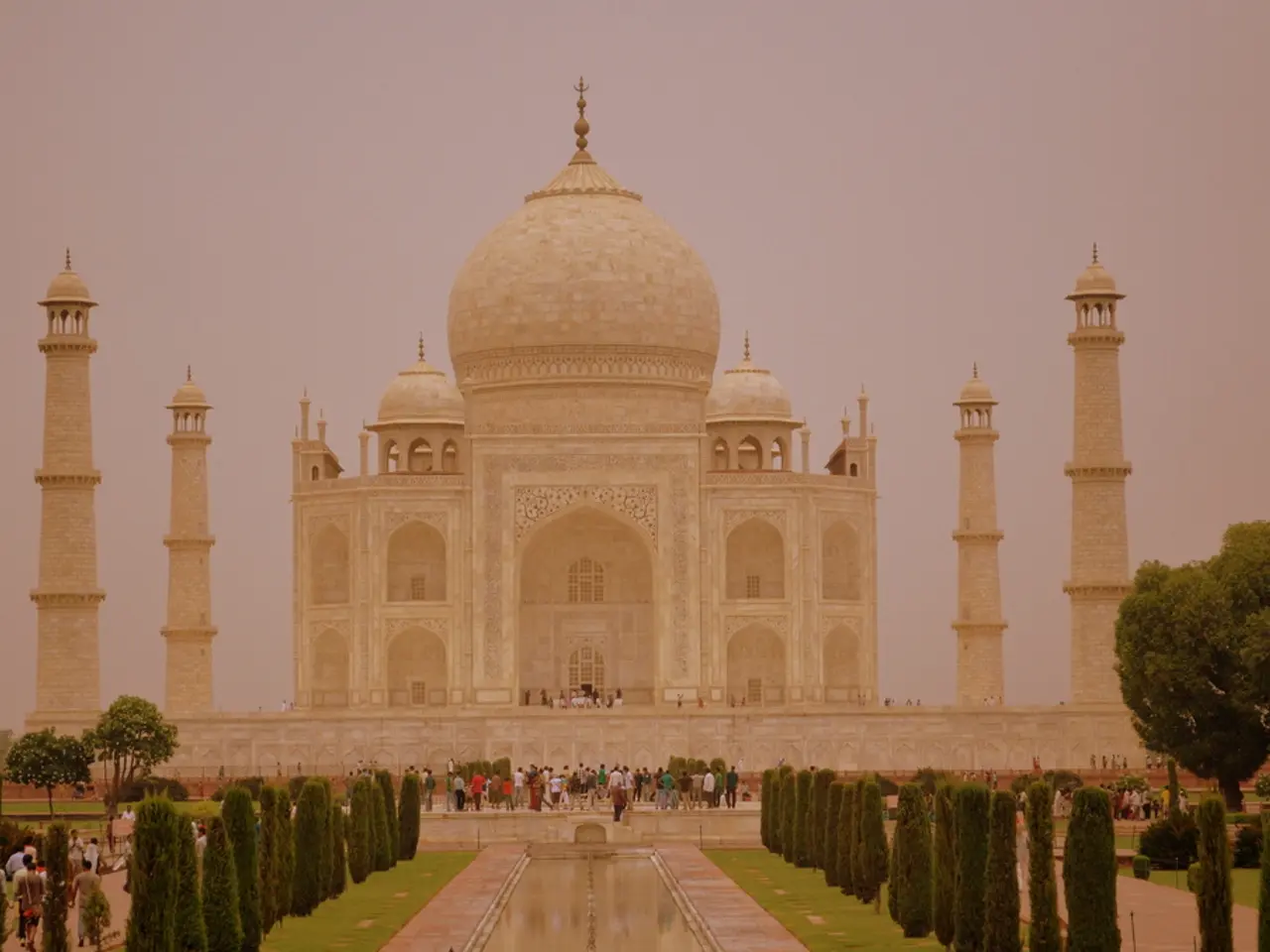The Reason for the Observance of Teej Festival
The Teej festival, a series of Hindu celebrations mainly observed by women in North India and Nepal, is more than just a festive occasion. It's a spiritual journey, a cultural statement, and an emotional celebration that holds profound religious, cultural, and emotional significance.
At its core, Teej commemorates the reunion of Lord Shiva and Goddess Parvati, highlighting the central spiritual reason behind this vibrant festival. The story of Goddess Parvati's unwavering penance to win Shiva's love symbolizes devotion, love, and marital fidelity, making it especially important for women seeking marital happiness and prosperity.
Culturally, Teej is celebrated with a riot of colour and vibrant rituals. Women dress in bright attire, adorn themselves with bangles (symbols of fertility, prosperity, and harmony), apply intricate henna designs, and gather for folk songs, dances, and storytelling. The festival, which often coincides with the monsoon season, embodies nature's renewal and abundance. It is marked by colourful festivities such as swings (jhulan utsavs), folk dances, and processions, notably in regions like Rajasthan and Uttar Pradesh, where temples dedicated to Goddess Parvati become focal points. The giving of 'sindhara' gifts from parents to married daughters and their in-laws emphasizes familial bonds and social customs.
Emotionally, Teej fosters a sense of hope, joy, and reverence among women, affirming the strength and sanctity of marital relationships. For brides-to-be and married women alike, fasting and puja during Teej symbolize dedication to their husbands’ well-being and the aspiration for harmonious conjugal life. It also allows women to reconnect with their maternal homes and celebrate womanhood through community and tradition.
Teej includes several sub-festivals, such as Hariyali Teej, Kajari Teej, and Hartalika Teej, which usually fall during the monsoon season (July to September). Each sub-festival carries its unique significance, but all share the common thread of honouring Goddess Parvati and Lord Shiva, celebrating feminine energy, community bonding, and sisterhood.
The fast observed during Teej is extremely rigorous, with many women going without food or water for an entire day and night. This test of endurance, self-control, and devotion mirrors Parvati's penance, making it a significant aspect of the festival.
Teej serves as a celebration of feminine strength and resilience, offering a platform for women's voices and cultural expression. It encourages the preservation of folk art, customs, and oral histories, acting as a reminder to cherish relationships, values, and nature in a rapidly changing world. Unmarried girls fast and pray with the hope of finding a loving and caring life partner.
In summary, Teej is a deeply layered festival that combines spiritual devotion, cultural celebration, and emotional affirmation, all focused on marital bliss and the rejuvenation associated with the monsoon. It's a beautiful blend of tradition and modernity, a testament to the power of devotion and the strength of womanhood.
The Teej festival, in the realm of social media, serves as a platform for showcasing cultural travel experiences, especially during the monsoon season, capturing the vibrant colors, folk dances, and traditional rituals associated with the festival.
In the global landscape, Teej's cultural significance extends beyond the world of fashion-and-beauty, as women adorn themselves in traditional attire during celebrations, demonstrating unique styles that resonate with the lifestyle of certain regions in Northern India and Nepal.
The emotional resonance of Teej influences relationships and love-and-dating dynamics, as it champion d devotion, love, and marital fidelity, offering hope, joy, and reverence among women seeking marital happiness and prosperity.
The cultural travel enthusiast may also discover fascinating family-dynamics during Teej, as the giving of 'sindhara' gifts emphasizes familial bonds and social customs, showcasing the importance of these relationships in the festival's context.
As a travelers' journey, Teej is not only a celebration of the reunion of Lord Shiva and Goddess Parvati but also a testament to the strength and resilience of women, their commitment to tradition, and their unyielding spirit in a rapidly changing world.




